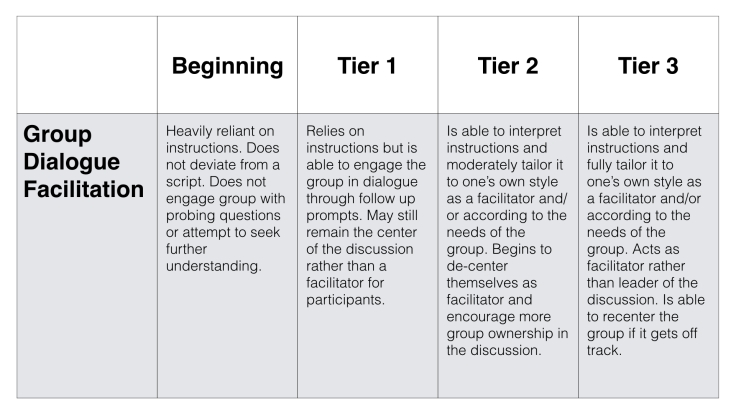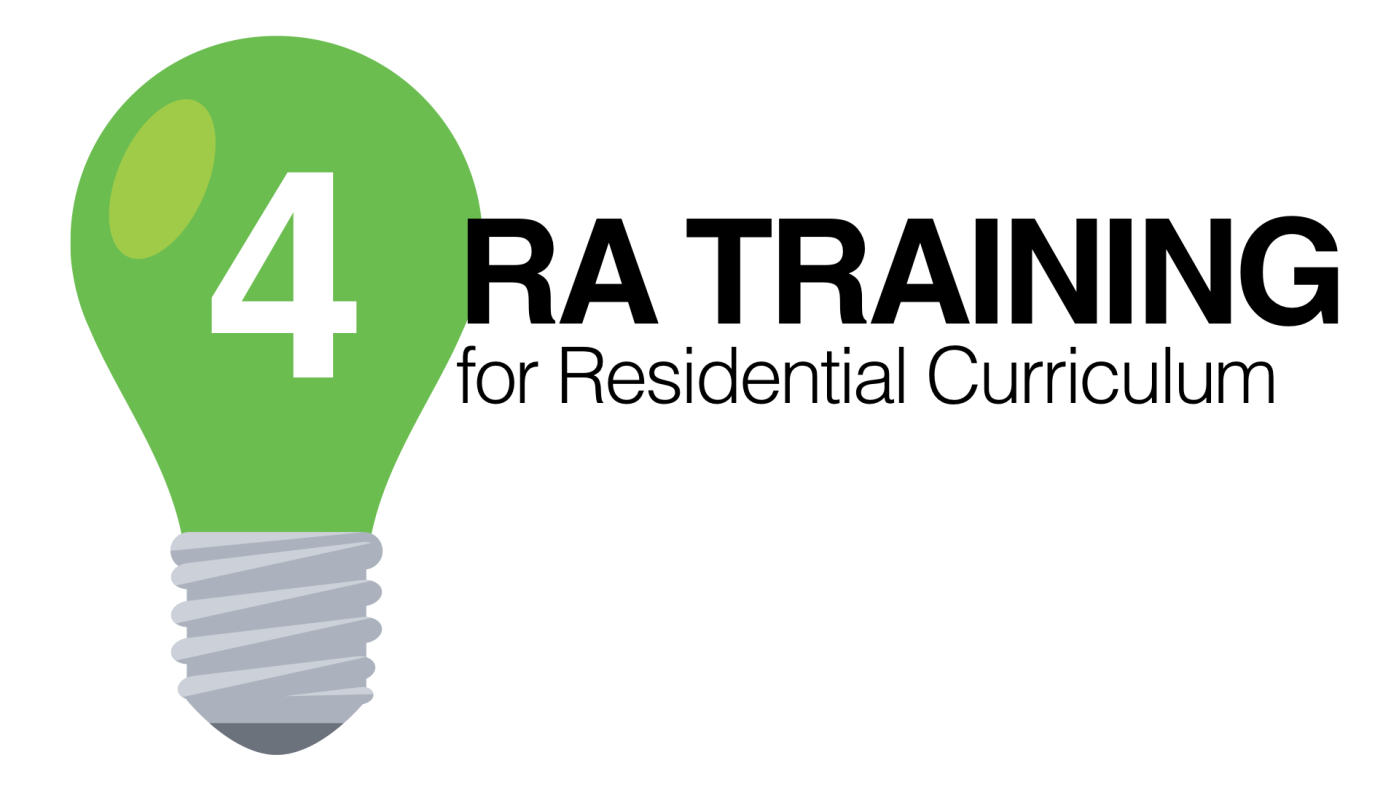The following is part of a series of blog posts addressing a number of areas related to developing a training program for RAs and student staff members working within a residential curriculum model. Posts included in this series are:
After determining the goals and outcomes for a curriculum, the magic happens when you begin scaffolding and sequencing your learning. It is in this stage that you find the key to the transformation from a highly developed program model into an intentionally designed curriculum. The same is true of your RA development. Utilize the same principles of residential curriculum design and apply it to your training efforts–determine an educational priority, establish goals, and write narratives and outcomes. After establishing your objectives, begin to craft your schedule such that each session successively builds off the one prior. This will guide the facilitation guides you develop for each of the sessions in your training.
The Importance of Rubrics
Rubrics are critical to your sequencing efforts. A well designed rubric takes one of your defined learning outcomes and breaks it down into stages of development. For example, let’s say you want RAs to be skilled in group dialogue facilitation. A rubric for these skills may look something like this:

A rubric, such as in the example above, can help with the design of your training sessions and the content you are sequencing within them. Digging in deeper, one can think of ways to start sequencing training activities. It would seem that RAs would first need to reflect on and define their own facilitation style. Next, they may need to understand the general goals of group dialogue and strategies for facilitating it. Further, they need to understand how to look for and interpret group behavior to help guide the conversation. You may also wish to review group development theories such as Tuckman’s stages of group development. Finally, remember to provide space for an experiential component, where RAs can apply their learning and receive feedback.
Not all of these objectives need to be covered in a single discrete session, however. Instead, some may overlap with other training topics you may wish to cover. In a fully developed training curriculum, content in each session may help inform the content in another, helping RAs work towards synergies.
An alternative, or complementary approach, might be to think of rubrics in terms of years of job experience. For example, by the end of the year, a first year RA should know and be able to do the following things. A second year RA can achieve more advanced outcomes, and therefore they should receive a different type of training than that of a first year RA. By creating rubrics for each year of the RA experience, you can also share these documents with RAs to help them understand expectations and what they can learn through their employment. Furthermore, you could tailor your performance evaluations to the RA’s experience level, raising the bar for returning staff members in the process.
Bloom’s Taxonomy and RA Training
Similar to rubrics, reflecting on the successively more complex cognitive tasks outlined in Bloom’s Taxonomy can also help with the sequencing of your training efforts. The idea behind reflecting on Bloom’s work is to reason out how an RA may come to a deeper level of learning and how you can structure your efforts to help them achieve it. Bloom’s sequence roughly follows the following order: remember (recalling facts), understand (explain concepts), apply (using knowledge to inform responses to situations), analyze (connecting ideas), justify (providing a rationale for decisions), and create (produce original work). Utilizing this framework can help you understand how you might organize your training within sessions and between sessions.
For example, if we were hoping to develop an RA’s capacity to handle or confront potential policy violations, we may outline something as follows:
- Remember – Be able to recall the policies.
- Understand – Be able to explain why the policies exist and their rationale.
- Apply – Be able to handle/confront situations where policy violations may have occurred.
- Analyze – Be able to understand the intent behind the policy and how it connects (or not) to the current situation.
- Justify – Be able to explain why they handled/confronted the situation the way they did.
- Create – Be able to uniquely handle/confront situations according to context and engage in strategies to reduce the possibility of them occurring in the first place.
Think Ahead to Further Training
Training programs do not need to be conceived of as monolithic experiences. An RA’s learning about their role does not begin and end in a two-week span in August. Instead, think about how you can begin your training program from the point of pre-hire application and continue it throughout the academic year. There may be ways you can already start the training process with how you structure information sessions for RA applicants and in the application and the interviews processes themselves–perhaps through providing panels with current RAs, shadowing opportunities, an RA class, online modules, the types of experiential activities you may incorporate into your interview days, etc.
You can also expand training throughout the academic year. (Are there timely training topics that can wait and are better suited to another time? Can individual hall staff meetings be reconceived as opportunities for continuous training? Are there opportunities to build off of knowledge skills gained and move them towards increasing complexity? etc.) Thinking of the entire academic year as a training opportunity instead of it being collapsed into a two week span can help in building a learning-centric organization and culture. Furthermore, it can help with staff buy-in.
Conclusion
Applying curricular concepts to your RA training programs can be immensely beneficial in honing your focus on learning, increasing its level of complexity, and modeling good educational design. Sequencing your training efforts, in particular, can help with developing a more intentional training and one that can encourage more investment from and benefits to your staff members. This is why establishing a curriculum is not just a one-off activity, but one that needs to be infused in all of the work that you do. By establishing curriculum as a mindset and not just a set of goals and outcomes, you can lead your organization towards transformation. This transformation can begin with the training of your staff members.
Key Questions
- How can you model-the-way for your staff members in applying curricular concepts to training?
- What are the learning outcomes for your training efforts and their associated rubrics?
- How can you help RAs achieve successively more complex levels of knowledge and skill?
- How can you provide deeper level of training for your returning staff members?
- How can you conceive of RA training as a year-long process?
